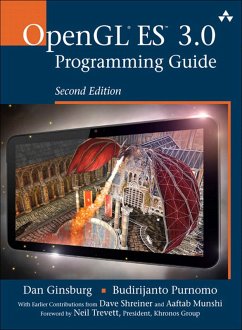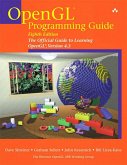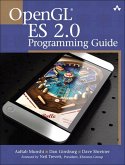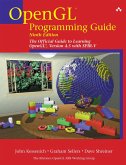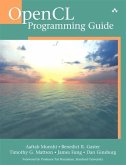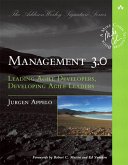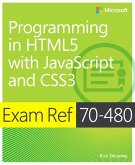OpenGL ® ES (TM) is the industry's leading software interface and graphics library for rendering sophisticated 3D graphics on handheld and embedded devices. The newest version, OpenGL ES 3.0, makes it possible to create stunning visuals for new games and apps, without compromising device performance or battery life.
In the OpenGL® ES(TM) 3.0 Programming Guide, Second Edition, the authors cover the entire API and Shading Language. They carefully introduce OpenGL ES 3.0 features such as shadow mapping, instancing, multiple render targets, uniform buffer objects, texture compression, program binaries, and transform feedback.
Through detailed, downloadable C-based code examples, you'll learn how to set up and program every aspect of the graphics pipeline. Step by step, you'll move from introductory techniques all the way to advanced per-pixel lighting and particle systems. Throughout, you'll find cutting-edge tips for optimizing performance, maximizing efficiency with both the API and hardware, and fully leveraging OpenGL ES 3.0 in a wide spectrum of applications.
All code has been built and tested on iOS 7, Android 4.3, Windows (OpenGL ES 3.0 Emulation), and Ubuntu Linux, and the authors demonstrate how to build OpenGL ES code for each platform.
Coverage includes
This edition of the book includes a color insert of the OpenGL ES 3.0 API and OpenGL ES Shading Language 3.0 Reference Cards created by Khronos. The reference cards contain a complete list of all of the functions in OpenGL ES 3.0 along with all of the types, operators, qualifiers, built-ins, and functions in the OpenGL ES Shading Language.
In the OpenGL® ES(TM) 3.0 Programming Guide, Second Edition, the authors cover the entire API and Shading Language. They carefully introduce OpenGL ES 3.0 features such as shadow mapping, instancing, multiple render targets, uniform buffer objects, texture compression, program binaries, and transform feedback.
Through detailed, downloadable C-based code examples, you'll learn how to set up and program every aspect of the graphics pipeline. Step by step, you'll move from introductory techniques all the way to advanced per-pixel lighting and particle systems. Throughout, you'll find cutting-edge tips for optimizing performance, maximizing efficiency with both the API and hardware, and fully leveraging OpenGL ES 3.0 in a wide spectrum of applications.
All code has been built and tested on iOS 7, Android 4.3, Windows (OpenGL ES 3.0 Emulation), and Ubuntu Linux, and the authors demonstrate how to build OpenGL ES code for each platform.
Coverage includes
- EGL API: communicating with the native windowing system, choosing configurations, and creating rendering contexts and surfaces
- Shaders: creating and attaching shader objects; compiling shaders; checking for compile errors; creating, linking, and querying program objects; and using source shaders and program binaries
- OpenGL ES Shading Language: variables, types, constructors, structures, arrays, attributes, uniform blocks, I/O variables, precision qualifiers, and invariance
- Geometry, vertices, and primitives: inputting geometry into the pipeline, and assembling it into primitives
- 2D/3D, Cubemap, Array texturing: creation, loading, and rendering; texture wrap modes, filtering, and formats; compressed textures, sampler objects, immutable textures, pixel unpack buffer objects, and mipmapping
- Fragment shaders: multitexturing, fog, alpha test, and user clip planes
- Fragment operations: scissor, stencil, and depth tests; multisampling, blending, and dithering
- Framebuffer objects: rendering to offscreen surfaces for advanced effects
- Advanced rendering: per-pixel lighting, environment mapping, particle systems, image post-processing, procedural textures, shadow mapping, terrain, and projective texturing
- Sync objects and fences: synchronizing within host application and GPU execution
This edition of the book includes a color insert of the OpenGL ES 3.0 API and OpenGL ES Shading Language 3.0 Reference Cards created by Khronos. The reference cards contain a complete list of all of the functions in OpenGL ES 3.0 along with all of the types, operators, qualifiers, built-ins, and functions in the OpenGL ES Shading Language.
Dieser Download kann aus rechtlichen Gründen nur mit Rechnungsadresse in A, B, BG, CY, CZ, D, DK, EW, E, FIN, F, GR, HR, H, IRL, I, LT, L, LR, M, NL, PL, P, R, S, SLO, SK ausgeliefert werden.

